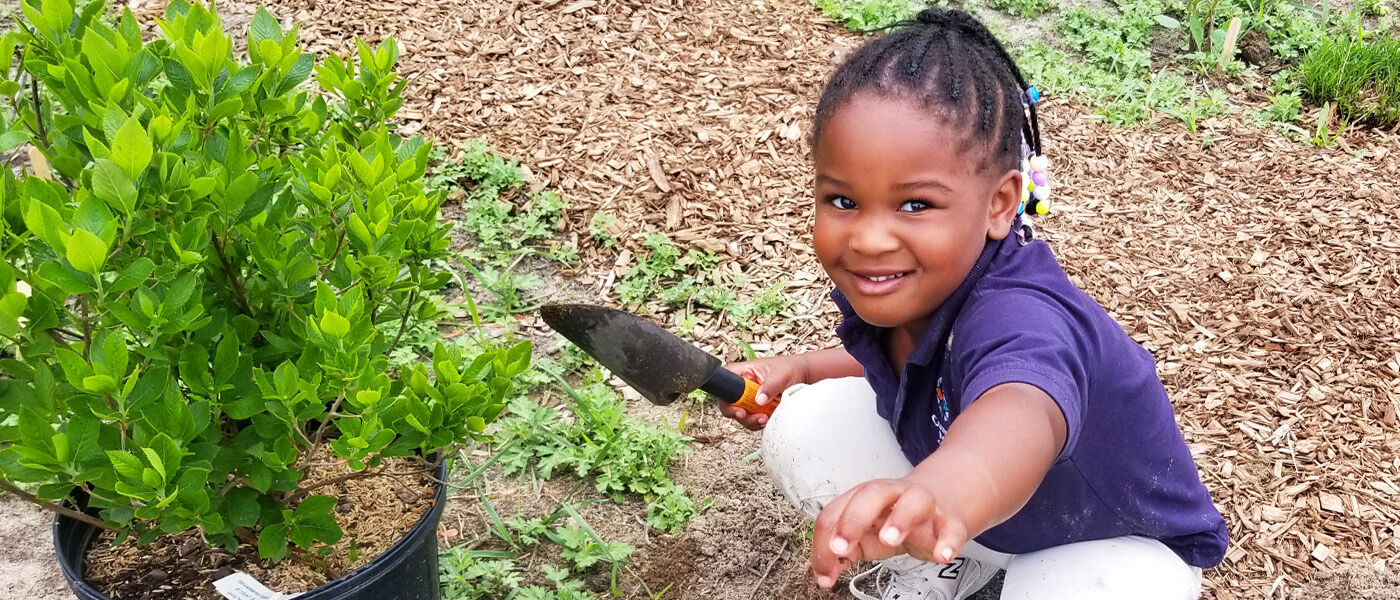STEM in Bloom: Fostering Growth with Design Ecosystems at Compass Academy
Inspiring the next generation of scientists is at the core of Liberty Science Center’s mission. While we’re proud to provide opportunities for families, students, and young minds eager to explore the world around them, we also know that this work doesn’t happen in isolation.
That’s why we were thrilled to catch up with Dean and Tom from Design Ecosystems, who previously visited the Science Center during our Earth Week programming. They spoke with us about how Liberty Science Center impacted their own careers [read here], and shared a recent project that beautifully reflects the power of hands-on STEM education: a collaboration with a 5th grade class at Compass Academy in Vineland, NJ to create a pollinator garden.
The idea began when Dawn Payne, a STEAM teacher at Compass Academy, reached out to Dean and Tom for a professional perspective on executing the vision that she and her students had worked hard to develop.
Having just completed a unit on monarch butterflies, the students were ready to take their learning beyond the textbook. The pollinator garden became a hands-on way to deepen their understanding—designing, planting, and maintaining a space that directly supports monarch survival. The project blended life science, earth science, and environmental stewardship, while reinforcing STEM skills such as observation, data collection, problem-solving, and collaboration.
“Working with the Design Ecosystems team was a fantastic learning opportunity for students and teachers alike. Tom and Dean created an experience that let students step into the role of landscape architects—something none of us could have come close to simulating,” Dawn shared, reflecting on her experience. “This even inspired a few students to consider pursuing landscape architecture themselves! Interacting with real-world careers helps students see possibilities for their future and makes learning feel meaningful.”
While the students clearly gained an elevated learning experience, the collaboration left just as strong an impression on the designers. The team was struck by how this class went above and beyond in every stage of the project— “We are not exaggerating when we say that these students raised the bar for what we believed to be possible for young environmentalists.”
But beyond the impressive outcome, the garden illustrates something deeper: why STEM education and hands-on learning are so critical in the lives of young students. With the right tools and encouragement, they can accomplish truly meaningful work.
As Dawn put it: “Kids this age are natural engineers. They’ll build, test, and tinker without worrying if it ‘works’ the first time. In fact, they’re hardwired to dream up out-of-the-box ideas—ones that sometimes get filtered out as we get older. Starting STEM early lets them hold onto that creativity and shows them that ‘fail’ just means ‘first attempt in learning,’ and that trying again is part of the fun.”
The impact of the garden wasn’t just academic—it was a personal experience they were eager to share. During a Community Tour Day, the 5th graders got to share their work with families, younger students, and members of the community.
Dean and Tom recalled one particularly powerful moment: “We heard the 5th graders introducing their younger peers to their garden, reading off their rules, and guiding them along the paths to paint rocks and learn about pollinators. This was a moment where you could see how hands-on experiential learning provides a deeper connection to learning. These experiences will stay with the children for many years to come.”
For Dawn, this project is a prime example of why this kind of learning is important. Years ago, she first visited Liberty Science Center as a 5th grade teacher on a school field trip and today, she continues to praise the Center for offering exciting educational experiences that make learning fun.
Dean and Tom echo this sentiment— “LSC has always been, and continues to be, a space dedicated to understanding how our world works, in ways that engage directly with learners of all ages (most importantly our young ones). The program is designed to inspire, the infrastructure is built to explore.”
At Liberty Science Center, we believe that real-world learning opportunities, such as this garden project, are essential. They reflect the kind of curiosity, collaboration, and discovery we strive to nurture every day. If you're an educator, parent, or simply someone passionate about hands-on learning, we invite you to discover more ways to spark that same curiosity—in your classroom, at home, or right here at Liberty Science Center.
Want to learn more about the garden from the designers’ perspective? Read about it on Design Ecosystems’ Field Notes blog.
Photos courtesy of Dawn Payne.
